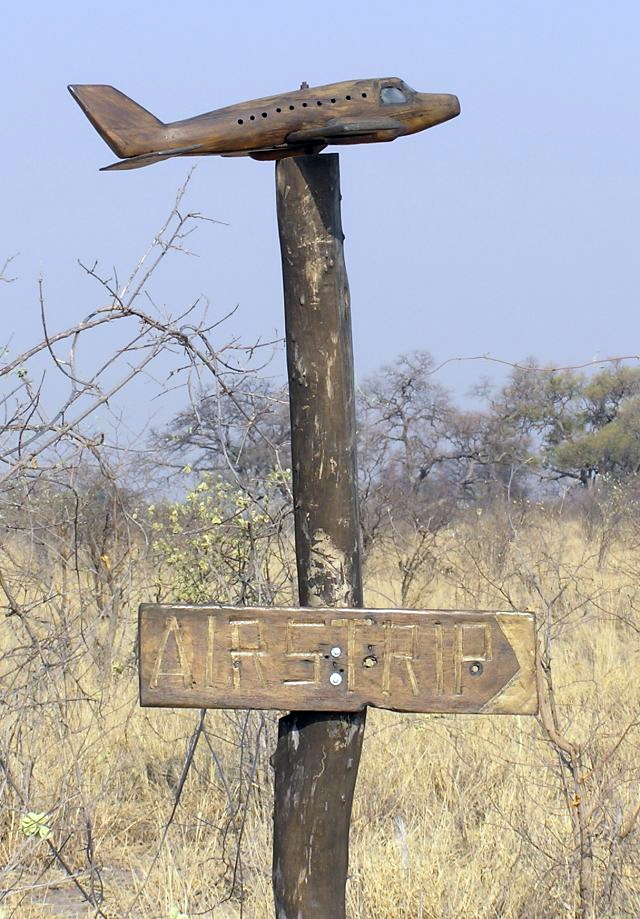|
Zum Flugfeld To Airstrip Signpost
Lianshulu Lodge Airstrip ICAO Code : FYLS IATA Code : LHU Coordinates :
18°7’2”S 23°23’35”E Runway Length : 1.300 meters Elevation : 3246 feet Condition
: Gravel & Grass VHF Frequency : 124.80 Status : Private & Unmanned
Mamili Nationalpark (also
known as Mamili National Park
or Nkasa Lupala in the
local language) is a large national park located in
Namibia, specifically
in the
Zambezi Region (formerly known as the Caprivi Strip). It is one
of the lesser-known parks in Namibia but is significant for its
incredible wildlife, wetlands, and importance to conservation in the
region.
Key Facts about
Mamili Nationalpark:
-
Location:
-
Mamili Nationalpark
is located in the
Zambezi Region (formerly known as the
Caprivi Strip),
which is situated in the northeastern part of Namibia. It
borders Angola
to the north and is near the
Zambezi River.
-
The park is
positioned within the floodplains of the
Linyanti and Kwando
Rivers, which create lush wetlands and contribute to
the park's unique ecosystem.
-
Size:
-
The park covers an
area of approximately
3,000 square kilometers (about
1,160 square miles),
making it a large and relatively remote protected area in
Namibia.
-
Landscape:
-
The park is
characterized by a mix of
wetlands,
savannahs,
and grasslands,
and is part of the larger
Kavango-Zambezi
Transfrontier Conservation Area (KAZA TFCA), which
includes protected areas in Namibia, Angola, Botswana, Zambia,
and Zimbabwe.
-
During the wet
season, the park is flooded, creating extensive wetlands that
attract a wide variety of birdlife and other wildlife.
-
Wildlife:
-
Mamili Nationalpark
is home to a rich diversity of wildlife, including various
species of elephants,
buffaloes,
zebras,
impalas,
sable antelopes,
hippopotamuses,
crocodiles,
and leopards.
-
The park also
offers prime bird-watching opportunities, with over
400 species of birds
recorded, including
waterfowl,
herons, and
kingfishers.
-
The combination of
wetland ecosystems and floodplains makes the park an ideal
habitat for many species, especially migratory birds.
-
Waterways and Floodplains:
-
The
Kwando River
flows through Mamili, creating an expansive wetland environment
that is vital for wildlife and plant life.
-
The seasonal
flooding of the area provides an abundance of water and food for
both resident and migratory species. This also means that the
park can be quite challenging to access during the wet season,
as many roads become impassable.
-
Conservation Importance:
-
Mamili National
Park plays a significant role in
wildlife conservation
in the region, particularly in the preservation of large mammals
like elephants and buffaloes.
-
It is part of a
larger network of conservation areas under the
KAZA TFCA,
which aims to protect wildlife corridors and ecosystems that
span multiple countries in Southern Africa.
-
Tourism and Activities:
-
Mamili National Park
is less developed for tourism compared to other Namibian parks
like Etosha,
but it offers unique opportunities for
eco-tourism,
especially for those interested in
wildlife photography,
birdwatching, and
safari experiences.
-
The park is best
explored by 4x4
vehicle, and boat trips along the rivers are popular
for observing wildlife in the wetlands.
-
Accommodation
options in the area are limited, but there are some lodges and
campsites outside the park where visitors can stay.
-
Challenges:
-
The park faces
challenges related to
accessibility during the rainy season, as the roads can
become flooded or impassable. This limits the number of tourists
who can visit during certain times of the year.
-
Poaching and
illegal hunting have also been concerns in some parts of the
park, although efforts are being made to improve conservation
management.
Conclusion:
Mamili Nationalpark
is an important but lesser-known gem in Namibia's network of protected
areas. With its rich biodiversity, pristine wetlands, and proximity to
major river systems, it is a key destination for wildlife enthusiasts
and eco-tourists looking for a more remote and tranquil experience in
Namibia. Though access can be challenging, those who visit will be
rewarded with opportunities to see diverse wildlife, including
elephants, hippos, and a variety of bird species, all within an
impressive and unique landscape.
Der Mamili-Nationalpark (offiziell seit 2012 Nkasa Rupara
Nationalpark) ist ein einzigartiges Feuchtgebiet im Nordosten Namibias
und das größte unter Schutz stehende Sumpfgebiet des Landes. Hier sind
die wichtigsten Informationen zusammengefasst:
Überblick
Lage:
Im Caprivi-Zipfel (Zambezi-Region), südlich des Mudumu-Nationalparks,
entlang des Kwando-/Linyanti-Flusses 19.
Größe: 320 km², geprägt
von Kanälen, Schilfbetten und Termitenhügel-Inseln 49.
Besonderheit: Teil des Kavango-Zambezi Transfrontier Conservation Area
(KAZA), einem länderübergreifenden Schutzgebiet 9.
Tierwelt
Säugetiere: Elefanten, Büffel (größte Population Namibias mit ~1.000
Tieren), Löwen, Leoparden, Flusspferde, Sitatunga-Antilopen und seltene
Rote Lechwes 149.
Vögel: Über 430 Arten, darunter Wattelkrane,
Pel’s Fischuhu und Schwarzwangennymphensittiche 49.
Reptilien:
Nilpferde und bis zu 5 m lange Krokodile in den Wasserläufen 12.
Aktivitäten & Reisezeit
4x4-Safaris: Der Park ist nur mit
Geländewagen erkundbar, vor allem in der Trockenzeit (August–November),
wenn die Inseln Nkasa und Lupala zugänglich sind 29.
Bootstouren:
Erkundung der Flussarme mit Kanus oder Motorbooten 1.
Vogelbeobachtung: Besonders lohnend in der Regenzeit (Januar–Februar),
wenn der Park zu 80% überflutet ist 29.
Praktische Infos
Anreise: Über die C49 von Kongola oder Katima Mulilo, dann über die
D3511 nach Süden. Ein neuer Brückenübergang verbessert den Zugang 911.
Unterkünfte:
Jackalberry Tented Camp (im Park) 7.
Nkasa Lupala Tented Lodge (am Rande des Parks) 9.
Sicherheit:
Malaria-Prophylaxe empfohlen; Fahrten nur in Fahrzeuggruppen aufgrund
schwieriger Geländebedingungen 12.
Konservierung & Bedeutung
Der Park dient als Korridor für Wildtiermigration zwischen Namibia,
Botswana, Angola und Zambia. Lokale Gemeinden sind in den Schutz
eingebunden, z. B. durch das Wuparo Conservancy-Projekt 49.
Für
Abenteurer und Naturliebhaber bietet der Park ein unberührtes
"Okavango-Delta-Erlebnis" – wild, abgelegen und voller Leben 19.
|
|
 Safaris
Bergsteigen
Wandern
Inselwandern Weltweit
Safaris
Bergsteigen
Wandern
Inselwandern Weltweit
 Europa
Inselwandern
Europa
Inselwandern
 Städtewandern
Städtewandern
 Paintings
Paintings  Dirk Rauschenbach
Dirk Rauschenbach
 Safaris
Bergsteigen
Wandern
Inselwandern Weltweit
Safaris
Bergsteigen
Wandern
Inselwandern Weltweit
 Europa
Inselwandern
Europa
Inselwandern
 Städtewandern
Städtewandern
 Paintings
Paintings  Dirk Rauschenbach
Dirk Rauschenbach

![]() 04.10.25 Copyright Dirk
Rauschenbach Koelnerstrasse 293 51702 Bergneustadt
Datenschutzerklaerung 02261 9788972 Mail ccooly(
at) web.de
04.10.25 Copyright Dirk
Rauschenbach Koelnerstrasse 293 51702 Bergneustadt
Datenschutzerklaerung 02261 9788972 Mail ccooly(
at) web.de